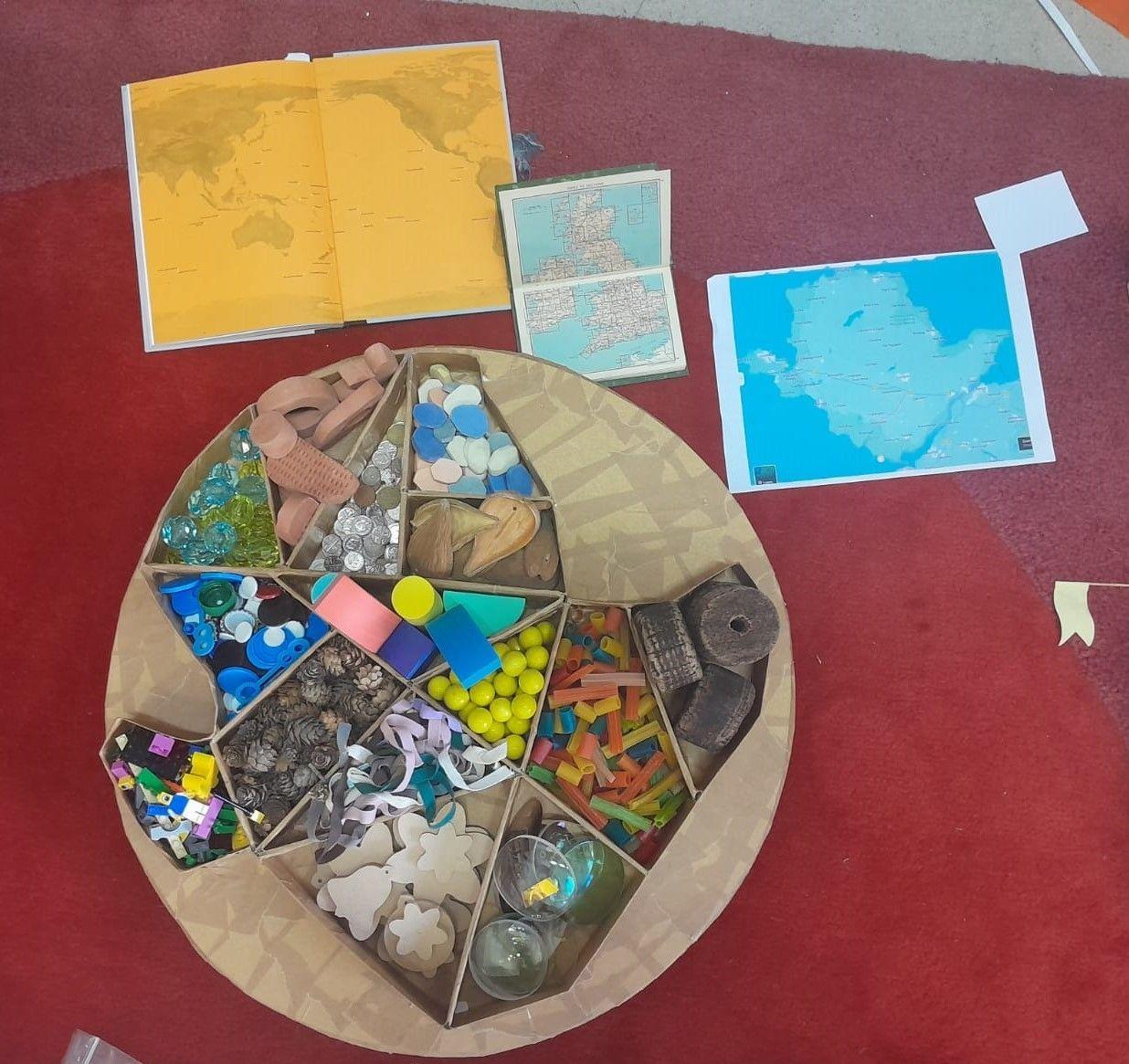
What is a Map?

I’m looking at a piece of A4 card, on it sits a line of corks, some bottle tops, some wool and a collection of acorns. It looks like it could be the remains of a village, abandoned centuries ago.
“Here is the kitchen, the bathroom and the garden. This is the pond with tadpoles and here are the holes my sisters keep digging.”
Great, and what's that? I say, and point at two round objects on either side of the end of a pencil. He starts sniggering.
Ah! This is a very good reminder that children will always go in their own direction. Considering this session was with my 10 year old son and his pal, an assemblage of appendage should really have been expected.
This was a test session to try out ideas for our Beth yw Map? What is a Map? workshop that we’ll be running across Ynys Môn this summer. In June, August and September, we’ll be engaging children outside of school settings - youth clubs, Scouts and Guides, Young Carers, Mencap Môn as well as Sioe Môn and Play Day. We’ll be working with children aged 8-18 and have a particular focus on disabled children, additional needs, and children outside of the mainstream routes. We expect the sessions to be disrupted, be full of surprises and hope this is where the research will come into its own in understanding:
- What things are important to map?
- How should those things be represented?
- What should the stewards of the map be aware of in the future, in regards to young people?
Play, creative responses, storytelling and game form the roots of the methodologies we use at Play:Disrupt use to facilitate conversations between and within organisations, institutions and participants. We treat participants as problem solvers in challenges, whether that be a placemaking exercise, health service or playground design.
The overall aim of the workshops are to gather ideas for the symbology and iconography of the map. What is important to map - good slides and swings? The place I dug a massive hole? The place with the biggest cow pats?
The centrepiece of this workshop is a large spinning Mandala of Ynys Môn (prototype pictured). Its sections are filled with loose parts - found, assembled objects, and we invite children to map where they play, where they spend time. We expect them to map tangible, fixed assets, temporary passings and the intangible like laughter, danger and the wellington stuck in the mud.
We’ll be thinking about use cases - how do young people on Ynys Môn currently use maps and how might maps aid them in everyday challenges? We have a chance here to design a TOTALLY DIFFERENT kind of map, one that uses 21st century resources to support 21st century life in all its beauty, challenges, and complications. We can zoom in and out, portal into anywhere on the web, use sound, video, even video game vibration. We can travel from our armchairs and use drones to eye different perspectives. We can hide things in plain sight or reveal our ancestors' histories.
We’re particularly interested in navigating this from a young person's perspective. Is it important to know Where Am I? Or Where Are My Friends at? Do we need precise directions, or does Google have that covered - is it good to map the really good play spaces, to make sure they’re safe from development? Should we value play spaces like Sites of Specific Scientific Interest? How about the ways we get around - what should go on a public platform? Should some things be kept tacit - a child to child knowledge base, like pirates hidden treasure, or could adults, in re-living children's experiences of space, make better decisions for future places?
We’ll be visiting groups in June and August and you can find us at Play Day and at the Anglesey Show. Please check out our events page for more information. And if you know a group who might be interested in taking part, please contact us: post@publicmap.org.
We can’t wait to get started, to see what might be discovered. We expect to navigate the unexpected and meet lots more rude silliness along the way!